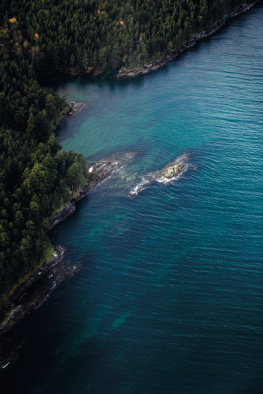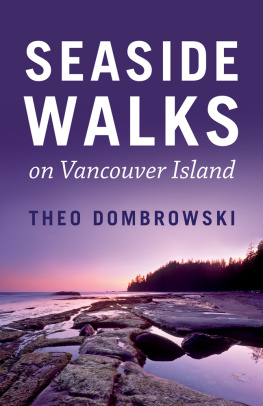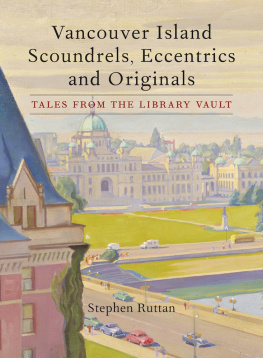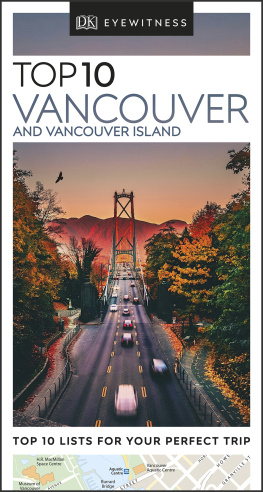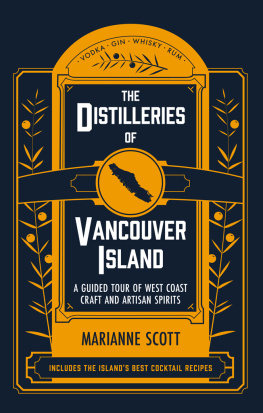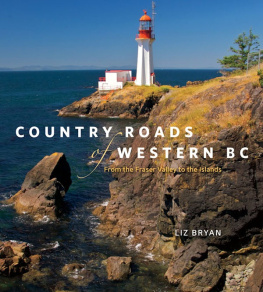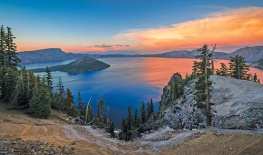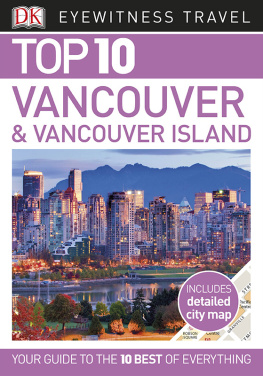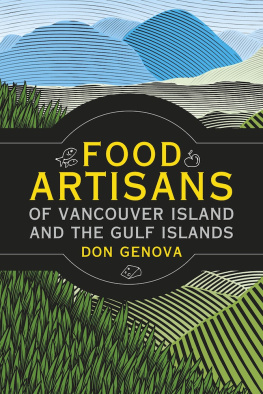Text and recipes copyright 2019 by DL Acken and Emily Lycopolus
Photographs copyright 2019 by DL Acken
All rights reserved. No part of this publication may be reproduced, stored in a retrieval system, or transmitted in any form or by any means, electronic, mechanical, photocopying, recording, or otherwise, without the prior written permission of the publisher. For more information, contact the publisher.
TouchWood Editions // touchwoodeditions.com
The information in this book is true and complete to the best of the authors knowledge.
All recommendations are made without guarantee on the part of the authors or the publisher.
Editing by Lesley Cameron
Design by Tree Abraham
Photography by DL Acken
Food styling by Aurelia Louvet
Library and Archives Canada Cataloguing in Publication
Title: Cedar + salt : Vancouver Island recipes from forest, farm, field, and sea / DL Acken
and Emily Lycopolus.
Other titles: Cedar and salt
Names: Acken, DL (Danielle L.), author, photographer. | Lycopolus, Emily, author.
TouchWood Editions gratefully acknowledges that land on which we live and work is within the traditional territories of the Lkwungen (Esquimalt and Songhees), Malahat, Pacheedaht, Scianew, TSou-ke and WSNE (Pauquachin, Tsartlip, Tsawout, Tseycum) peoples.
We acknowledge the financial support of the Government of Canada through the Canada Book Fund and, and of the Province of British Columbia through the Book Publishing Tax Credit.



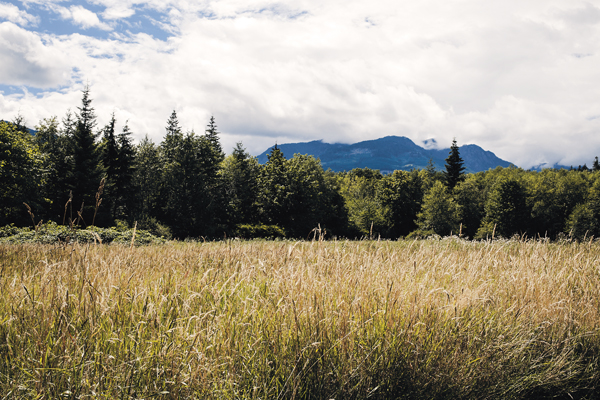
Introduction
On a hot and dry mid-August day, I stood on the side of a quiet country road, picking and eating blackberries. Id pick one for me, then one for the bucket. Then Id pick two for me, and one for the bucket. At the age of five, I thought this approach worked well.
My family often visited my grandparents in Mill Bay, where we would forage for blackberries; it was, in fact, our tradition. The abundance of wild blackberries on Vancouver Island was and continues to be mind-bogglingwe would fill buckets until the buckets overflowed, and still we would add even more. We knew the bucket was really full when the berries started settling and the weight of the ones on top crushed the bottom ones into juice.
Back at Grandmas house, the berries from the tops of the buckets would be frozen on cookie sheets, then transferred to freezer bags for a winter indulgence, when I would savour them while dreaming of those hot summer days. The juicy berries at the bottom were transformed into succulent pies, blackberry apple jam, and preserves. The smell from all the baking and processing filled my grandmas kitchen with an intoxicating aroma, and it was there that I fell in love with Vancouver Island.
Ever since then I have felt lucky to have roots in this unique and incredible place. The bounty that Vancouver Island provides is astounding: The cool, wet, misty winters create the perfect environment for kale and Swiss chard to grow year-round; the south-facing slopes of the Cowichan Valley are perfect for growing citrus, olives, and all sorts of exotic foods youd be surprised to find in Canada; in the sheltered coves, crabs and prawns flourish; in the deep waters and rivers, salmon spawn.
Living off the land and cultivating a holistic, sustainable lifestyle is not only attainable on Vancouver Island, its a way of life available to all. Why get food from off the Island that has to be delivered to us by boat or plane when the prices found at local farmers markets are often on par with the grocery stores? Purchasing and supporting local producers is simple and rewarding, and grows a bustling local food economy. Here you can stroll through farmers markets in the summer, learn from passionate growers about their multicoloured carrots and purple peppers, and find classified ads that invite people to pick overly abundant apple or fig trees. I want to share this bounty and help you bring it home to your own kitchen. In these pages, I invite you to join me in the adventure of living and eating on this coast. We are incredibly blessed to live here, and my hearts desire is to share with you the meaning of living, cooking, and eating on Canadas Vancouver Island. EL
When I was a young girl, I thought the Old Island Highway went on forever, a long, seemingly endless, winding road. My familys weekly journey from the Departure Bay ferry terminal to our cottage in Deep Bay regularly included the same, much-anticipated stops: a farm stand in Nanoose, where wed buy greens and other field veggies; Parksville, for ice cream; Qualicum Village, for cheese and other assorted gourmet goodies and then a seafood lunch at the beach; Bowser for local bacon, eggs, and the ever-important fishing bait. It would take hours to reach our destination, but when we did we were laden with local goods, and our weekend routine could commence.
Dad would always start our Saturdays at the unimaginable hour of 4 am. With smiles and hot tea, he would shuffle us out to the boat, telling us, this is when the fish wake up, and I suppose I believed him because we were usually one of the only pleasure crafts in a sea of commercial boats heading out of the harbour to set our lines early and catch our fill before lunchtime. At a young age, I learned the best fishing practices throughout the Broughton Sound: head out at the crack of dawn for coho salmon along the lighthouse shore, then over to Norris Rocks in the lazy noonday sun for ling cod and other assorted rockfish, and then check the traps on the way home for a lucky catch of Dungeness crab.
Sometimes Dad would set up the little boat barbecue, and our lunch would come out of the sea and into the pan within three to four minutes of being caught. It was the freshest and most delicious fish you can imagine. Afterward, wed head in for lazy walks along the shores of Fanny Bay, where Dad would scoop up oysters off the rocks and pop them open to slurp down their creamy flesh and briny liquor, being careful not to crunch into one of the few beautiful pearls he would sometimes hand to me. Then wed go back to the cabin for leisure time, a stroll down to the marina store, or, in the high summer, endless hours of berry picking and foraging in the small ravine beside the house. If we were lucky, Dad would take us up to Comox for dinner at The Old House where local beef was on the menu.
This was my childhood away from school and the normal comings and goings of life in the city. These trips planted the seeds for a lifetime connection between place and food, which took root and grew deep within my being. Now, when I think about those places on the Island, there is a direct link in my brain between their names and the flavours that come along with them: Parksville and Coombs are dairy-rich and sweet, like ice cream; Qualicum is salty, like its glorious cheese and clams and freshly baked bread; Deep Bay, Fanny Bay, and Union Bay are briny like the oysters and fish they harbour; and the Comox Valley is fertile and hearty, like its grass-fed beef.
Long before the new inland highway began to shuttle goods at lightning speed up and down Vancouver Island, people looked locally for these foods, always readily available around them. Importing from the Mainland can be expensive, thus meats reared at local farms, vegetables swapped for eggs over neighbouring fences, and a bounty of readily available seafood became staples of the daily diet of those who call this Island home. Now, as an adult living and raising my children here, Ive come to appreciate how vast these local ingredients are. When you add locally sourced grains, citrus, wines, wild game, and seafood to the list, youll get an idea of how impressive our food options are on Vancouver Island.
Next page
